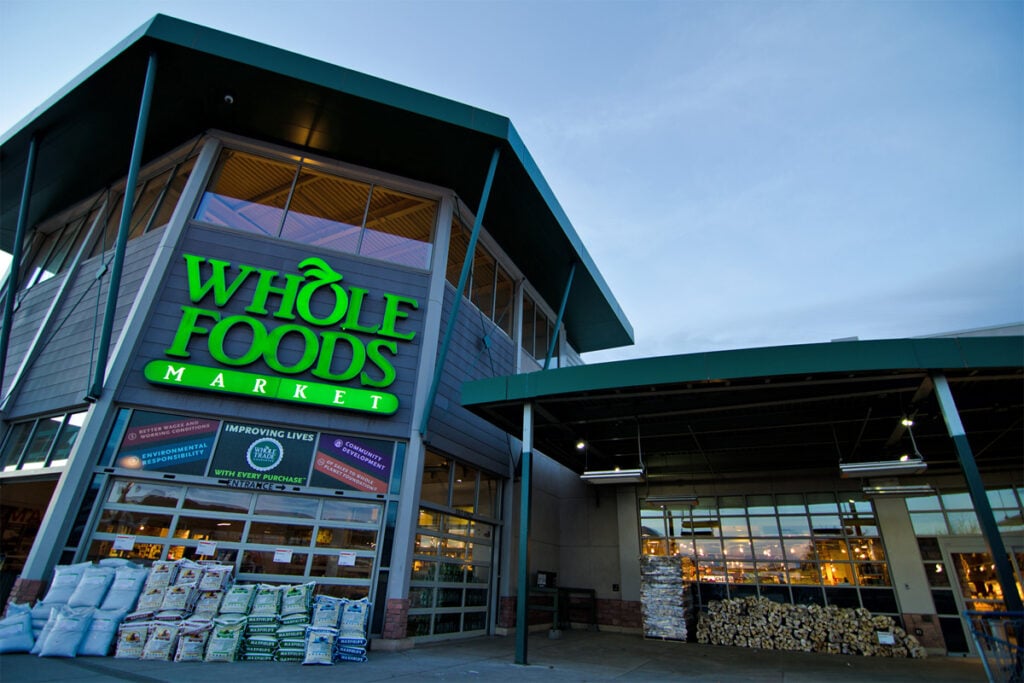News that Amazon is giving Prime members a 10% discount off foodsin its newly acquired chain of Whole Foods stores across the US is just one of many moves by the marketplace to start its push into CPG and supermarket shopping.
The discount, which is available through a discount app, essentially makes Prime a loyalty scheme for Whole Foods and should encourage more Prime members to start shopping at the store – that and free two-hour delivery on Whole Foods Market groceries through Prime Now in 10 cities introduced earlier this year along with 5% Back on Whole Foods Market purchases when using the Amazon Prime Rewards Visa Card.
“Amazon deploying a discount app for Prime members at Whole Foods shouldn’t come as surprise – Whole Foods never had a loyalty program, which doesn’t exactly line up with Amazon’s retail approach. Yet retailers should only envy the potential user base – 60 million Prime members – not the approach.”
– Sy Fahimi, SVP of product strategy at Symphony RetailAI
But this is the tip of a much bigger iceberg and one that retailers in CPG market worldwide should be eyeing with interest.
The move is part of Amazon’s bigger push to get the unbanked and the underbanked to shop in its stores and, more particularly, on its site. Giving more incentives to join Prime by offering discounts and cashback targets the 60million Prime members the company has in the US, but it is in other initiatives where the danger for supermarkets lies.
It already offers in the US Amazon Cash, where users can load cash onto a pre-paid card in Coinstar convenience stores across the US, using Coinstar’s 5000 ATM machines to turn paper money into ‘card money’ that can then be spent online.
This is likely to be extended to a quasi-checking account product, according to the Wall Street Journal. Customers could reportedly hold money in the account and take deposits, but it wouldn’t compete with a traditional bank.
In the US there are as many as 15milion people who are unbanked and, while not the typically well-heeled Prime members, they too want to spend money online.
Traditionally, this has been the constituency of Walmart, however, it seems that now Amazon is after this sector too.
According to JP Morgan, within two years, Amazon’s sales are going to match or even surpass those of Walmart in the US. This will only continue if it manages to cannibalise or even steal Walmart’s key demographic in the US.
And this is where Prime comes in: extending its reach to the unbanked, say, could have a massive and almost instant impact on Amazon sales to the detriment of many other CPG outlets. According to analysts:
“Amazon is the second-largest U.S. retailer and fastest growing at scale. We believe key drivers of Amazon’s share gains include: the Prime ecosystem; endless aisle driven by third-party seller expansion; outsized growth in large, underpenetrated categories; and removing friction and moving closer to customers.”
– Christopher Horvers, analyst, JP Morgan
Outside the US, retailers should keep a weather eye on how this plays out. Sure, the US market is very different to the UK and Europe, but meeting the needs of the unbanked remains the same. Extending Amazon’s reach to these people in everything from FMCG to CPG is going to have an impact.
While Walmart is divesting itself of Asda in the UK and stores in Germany to concentrate on developing markets in India and China, there are plenty of low-end retailers that could feel the pinch if this comes to pass here in the UK and across the EU.








3 Responses
well that’s a game-changer.
I’m usually slating the average persons value-for-money received from prime,
but even without the delivery and sub-par TV, £80 for 10% off a years shopping seems like a no-brainer. especially for families.
That said, it would only work with somewhere like Whole Foods, where the items are already known to be over-priced, if they started applying to asda/tesco wars, they’d have to up the price a bit to then lower it for the “loyal”, and just chase away those who shop around for value.
10% off Whole Foods is still far more expensive than most other chains.
“Walmart is divesting itself of Asda in the UK” – A different way of expressing that would be “Walmart will have a 40% share in the (soon to be) largest supermarket chain in the UK – Asda-Sainsbury”.
If it looks like it’ll be a success I’d be very surprised if Walmart doesn’t scoop up 100% of the company.